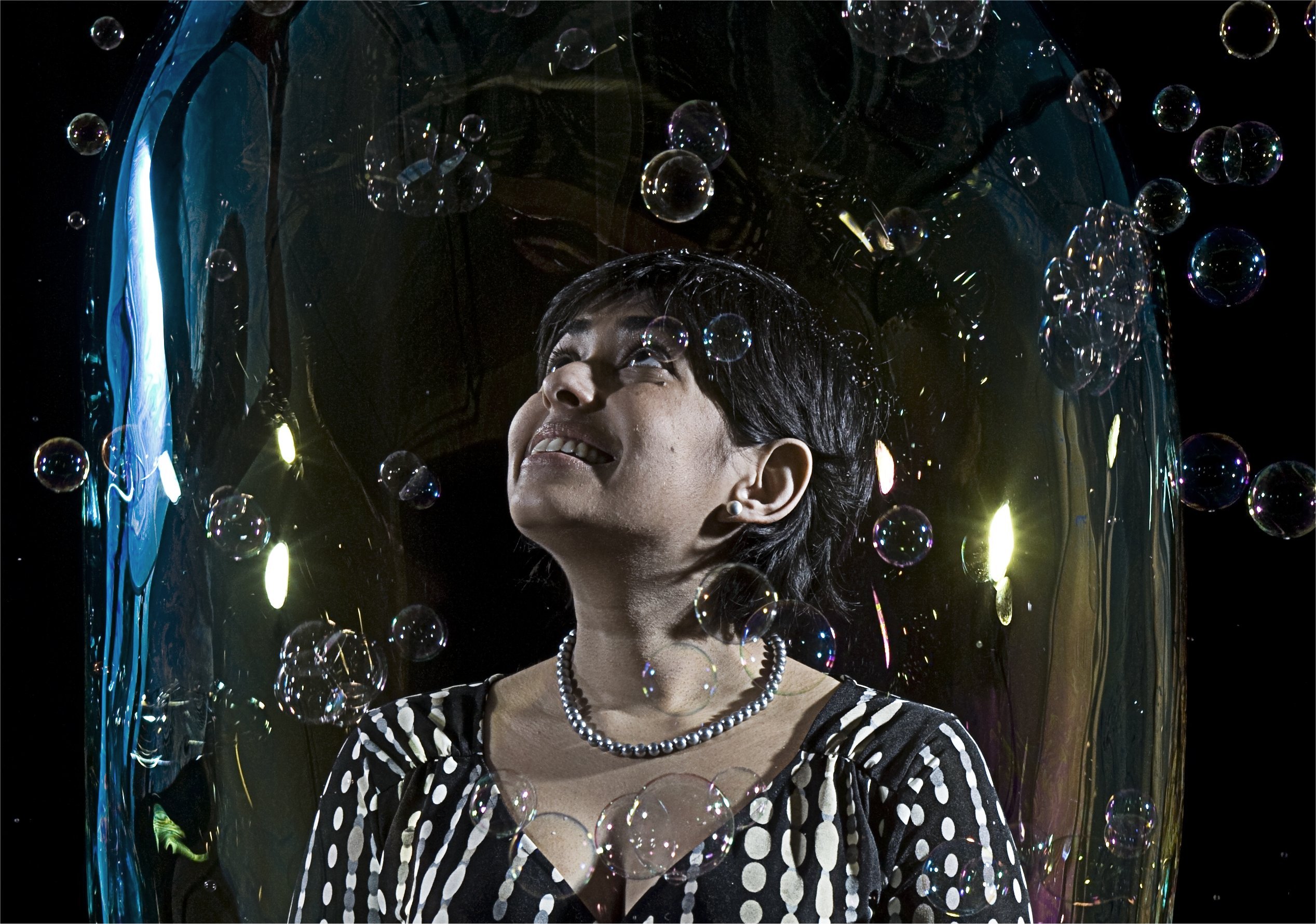
A STEM ambassador
Photo: Richard Cannon
Closing the gap
Kirsten Bodley believes that creativity is crucial to scientific and technical innovation, and in turn technical skills have a huge role to play in artistic progress.
Fifty years ago CP Snow’s famous ‘Two Cultures’ lecture highlighted the dangers of a wide gap between science and the arts, but how far have we come today? Maths and science underpin many creative ventures: games development, architectural design, sound engineering and many more industries rely on advanced technical skills in order to bring creative ideas to life. Indeed, science and technology are giving today’s artists new mediums with which to present their work. Who could forget David Hockney’s use of iPads to present his work Fleurs fraiches?
Similarly, technical and scientific industries benefit enormously from the injection of creativity. After all, technical capabilities are only as valuable as the applications to which they are applied, and creative thinking is essential to keep research and developers innovating in new and unexpected ways.
Today, art is also helping to communicate scientific achievements in exciting and accessible ways. However, there remains a divide and, particularly in the education system, there is often pressure for individuals to choose between artistic and technical talents. Yet there are many careers where it is actually of benefit to pursue both. In fact, I would argue that it is essential for students to have the opportunity to study both arts and science. A fusion of arts and science is critical to the UK’s future economic success.
The Science, Technology, Engineering and Mathematics Network (STEMNET) is an independent, charitable organisation that receives grant funding from Government to inspire young people in these subjects. This is to ensure that the UK maintains a flow of well-motivated, high-quality individuals into roles that apply STEM knowledge and skills. The organisation achieves this through partnership with government, industry, professional institutions and our UK-wide network of local organisations.
I would argue that it is essential for students to have the opportunity to study both arts and science
On behalf of the Department for Business, Innovation and Skills (BIS), our STEM ambassador programme recruits volunteers from industries that benefit from STEM skills to act as inspirational role models for young people. The creative industry is an area where we are working hard to promote opportunities for those with an interest in developing STEM skills. The programme enables around 25,000 enthusiastic volunteers to work with young people, schools and youth organisations across the UK, inspiring them with the astonishing range and breadth of careers that can come from studying STEM subjects. However, we need more volunteers from the arts to shout about their fantastic work that benefits from STEM skills in order to spur on the next generation into applying their skills in this industry.
Many creative industries rely on advanced technical skills in order to bring creative ideas to life, and arts graduates should embrace the opportunity to develop and apply STEM skills in their chosen field. A great example is Debbi Coleman. She graduated with an arts degree in English literature and media studies and now works as a 2D artist manager at Double Negative, Europe’s largest provider of film visual effects. Her arts-based degree gave her the perfect opportunity to discover her passion for film production, but it was only after graduating that Debbi developed her technological skills. After university, she got an entry-level job as a runner where her duties involved anything including running cans of film to the labs. From here, she moved into the video-to-film department where she learnt about the different properties of both video and film, and this provided an environment for her to develop and practise her technological skills. She also dabbled in 2D software packages, picking up ‘spillover’ work from the roto/clean-up team. Once ready for a new challenge, she made the obvious move into 2D compositing which proved to be both technically and creatively rewarding. Following visual effects roles in London and California, Debbi joined Double Negative in 2004 and has since applied her technical skills to some incredible projects, including Christopher Nolan’s 2010 film ‘Inception’. She is constantly developing her STEM skills and training in order to keep up with the latest advances and since 2011 has been an ambassador, working to raise awareness of the need for STEM skills.
Teachers at Broxburn Academy, a state-funded secondary school in West Lothian, were looking for ways to improve engagement with STEM both inside and outside the classroom and the 'STEM challenges' provided the exciting opportunity to make this happen. These are a series of national competitions inspired by London 2012. The STEM club at Broxburn Academy took part in a competition to design a human-powered engineering invention for creating the spark to light the Paralympic flame. The Academy secured first place, winning £1,000 that has since been invested in water rockets and a telescope.
Broxburn Academy’s dedication to STEM activities also helped them to secure the title of ‘Most dedicated STEM club’ at our 2012 awards. The awards are designed to recognise and celebrate the work of individuals like the ambassadors, schools and businesses in encouraging young people in STEM. In 2012 the awards were supported by BIS and the Science and Technology Facilities Council, which is offering all winners a trip to CERN, home of the large Hadron Collider. We received over 150 nominations and were overwhelmed with the dedication to engaging young people in STEM subjects.
Over the last decade our ambassadors have been responsible for almost 100,000 engagements with young people in activities ranging from running clubs, helping with competitions and awards, providing mentoring, careers support or role-model examples.
Kirsten Bodley is Chief Executive of STEMNET.
www.stemnet.org.uk
Join the Discussion
You must be logged in to post a comment.